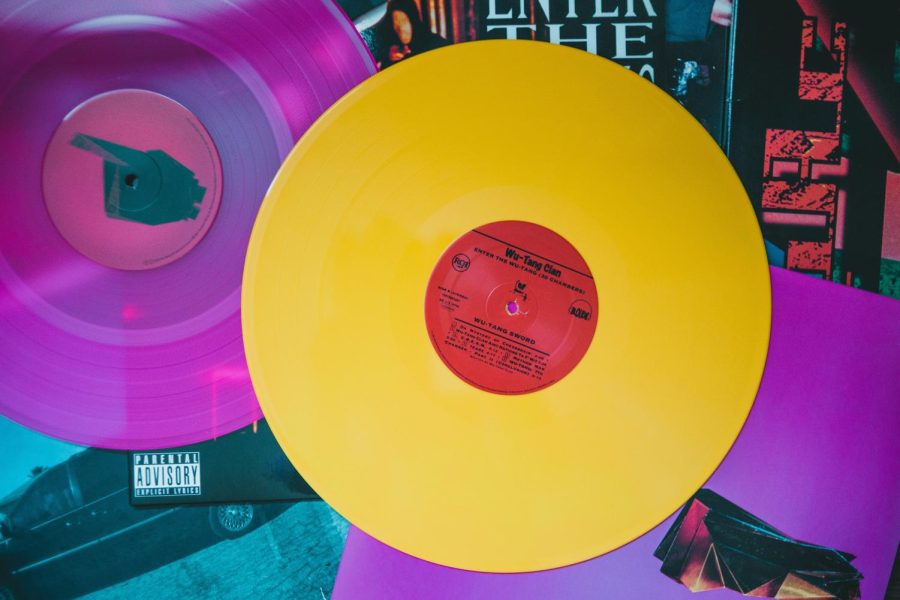Was Music Better in the Old Days?
September 29, 2022
Avid music listeners of any genre often hear the often clichéd phrase “music was better in the olden days,” either by their parents, or anyone who asks about someone’s music preferences. But is this saying true?
Jazz and classical music, even though evolving over the past century or two, still sound relatively the same due to very strict laws regarding composition. A sonata must first have an introduction of thematic elements. Next, an exposition playing said themes, a development where the composer experiments with the structure, and finally a recapitulation where everything shifts back. Composers whether from 1649 or 2010 still use this as a guideline for composing.
Contrasting classical with a more unambiguous genre like hip hop, there is no defined “formula” for a composition besides having a verse, chorus, some kind of backing beat, and a bridge. It is entirely up to the producer or rapper to choose the instruments, how they are arranged, and most importantly how the music of the song is structured. Therefore, the discussion of whether or not music is better is more suited to the more unambiguous genres, like pop, hip hop, and rock, rather than more formulaic and already well-defined genres like the aforementioned jazz and classical music. As hip hop and pop music see the most change within their genre, the best application of this discussion.
Since the late 2000s, the hip hop genre has exploded in popularity, where nowadays mainstream artists and hip hop producers would often collaborate with pop music songwriters to produce new songs for both genres. Mainstream success aside, the instrumentals between older and newer hip hop have not changed.
The biggest difference is the drum beat between the two genres that have changed. Listen to any older hip hong song, and they would normally have a more stripped-down drum beat, where the accents hit in the second and third measure, while newer beats often emulate trap, so producers often subdivide their beats into eight and hit the accent every third measure. Besides the drum beat changes, the instrumentals have been more sampled or recorded in a digital format rather than sampled from an older song or recorded acoustically.
Other than that, most rap songs still include lyrics about the struggles of living “in the streets,” the main instruments themselves haven’t changed, and there are still a number of newer artists that use the same method of sampling, remixing, and rapping hip hop is still known for. What about other genres?
The biggest change between older and newer genres is pop music. After all, the term is called “popular music” for a reason, and over the decades, pop music has changed as genres rise and fall. Look at how pop music in the 1960s is based on jazz and early blues music, but the 1980s are more dominated by disco and more European influences due to the second British Invasion. Nowadays, with hip-hop, EDM, R&B, and trap music becoming more popular, artists and songwriters also use the same instrumental styles as their influences and combine them with easy-to-understand lyrics and frequently repetitive instrument arrangements to make the song catchy and therefore stand out more. However, what has changed is the widening of how a song can be structured. The same song structure from the 1950s, with intros, chorus, verses, bridges, and fades still exist, but thanks to streaming and other forms of social media, shorter structures are becoming more popular.
“I think music has changed a lot over the years,” said Junior Gregory Zhu. “But, I do not think that one era of music is particularly better. But, I think music has lost some passion in it.”
A frequent argument in this discussion is how the compositions of older songs are better than newer songs, lacking “passion,” “creativity,” or downright “talent.” There is nothing wrong with modern composition. The progressions and harmonies still work and the formulaic repetitive lyrics and song structure are still present in many genres. As people want to harken back to older tunes as a homage or tribute, songs will inevitably use the exact same structure, instrumentation, and audio production as older songs.
“The problem isn’t a lack of good music; it’s an institutional failure to discover and nurture it,” explains Ted Gioia, an author of various music-related newsletters and books.
As more and more issues like how samples are copyrighted, how the older methods of discovering new artists like sending demos are impractical due to modern legal trouble, and the general lack of interest in newer songs, with Gioia stating how “old songs represent 70% of the U.S. music market,” explains why people may be discontent with newer music.
When people prefer older music, the music that inevitably plays on the radio, a public speaker, or a school dance will always be the one that is reminiscent of older music. The newer, more experimental music, which continually tries to innovate like the artists of the past, is now barred from mainstream success due to preference. No one is making worse songs, it’s just that fewer people refuse to play or listen to the better ones.
“Music is like friends,” said Junior Kevin Sunder. “You like making new ones but you also appreciate the older ones.”
The answer to “Is music better in the old days?” is a resounding maybe. If the demand for music that does not sound like another tribute to Michael Jackson is high enough, listeners will eventually listen to the more experimental and potentially better music made in our modern age. However, if the music industry still prefers their old vinyl LPs over the underground of the same experimentation those same types of vinyl are built on, older music will always trump the newer ones.
Photo Courtesy of UNSPLASH.COM

